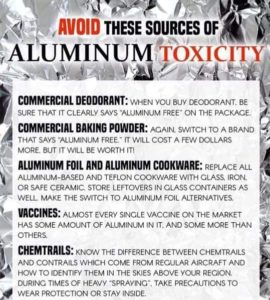
NutriBlast Protein Blend
https://www.healthelicious.com.au/NutriBlast-Protein-Blend.html
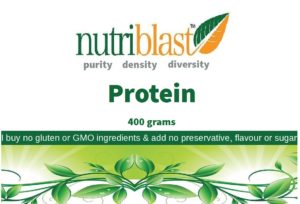
This site was one of many I looked at to obtain data on what to include in my new protein blend. It has some useful data on digestive enzymes that may be of assistance to you in areas other than protein digestion so I am including it here for your reference. The article is well-referenced and concise. Here are some extracts from it that relate to protein absorption.
Many organs work together to make up your digestive system.
These organs take the food and liquids you eat and break them down into simpler forms, such as proteins, carbs, fats and vitamins. The nutrients are then transported across the small intestine and into the bloodstream, where they provide energy for growth and repair.
Digestive enzymes are necessary for this process, as they break down molecules like fats, proteins and carbs into even smaller molecules that can be easily absorbed.
There are three main types of digestive enzymes:
Proteases: Break down protein into small peptides and amino acids
Lipases: Break down fat into three fatty acids plus a glycerol molecule
Amylases: Break down carbs like starch into simple sugars
Enzymes are also made in the small intestine, including lactase, maltase and sucrase.
If the body is unable to make enough digestive enzymes, food molecules cannot be digested properly. This can lead to digestive disorders like lactose intolerance.
Thus, eating foods that are high in natural digestive enzymes can help improve digestion.
Here are 12 foods that contain natural digestive enzymes.
1. Pineapple
Pineapples are a delicious tropical fruit rich in digestive enzymes.
In particular, pineapples contain a group of digestive enzymes called bromelain.
These enzymes are proteases, which break down protein into its building blocks, including amino acids. This aids the digestion and absorption of proteins.
Bromelain can be purchased in powdered form to help tenderize tough meats. It’s also widely available as a health supplement to help people who struggle to digest proteins.
A study on people with pancreatic insufficiency, a condition in which the pancreas cannot make enough digestive enzymes, found that taking bromelain combined with a pancreatic enzyme supplement improved digestion more than the enzyme supplement alone.
2. Papaya
Papaya or pawpaw is another tropical fruit that is rich in digestive enzymes.
Like pineapples, papayas also contain proteases that help digest proteins. However, they contain a different group of proteases known as papain.
Papain is also available as a meat tenderizer and digestive supplement.
Studies have shown that taking a papaya-based formula may help ease digestive symptoms of IBS, such as constipation and bloating.
If you want to eat papayas, just make sure to eat them ripe and uncooked, as heat exposure can destroy their digestive enzymes.
Also, unripe or semi-ripe papayas can be dangerous for pregnant women, as it may stimulate contractions.
11. Kiwifruit
The kiwifruit is an edible berry that is often recommended to ease digestion.
It’s a great source of digestive enzymes, particularly a protease called actinidain. This enzyme helps digest proteins and is commercially used to tenderize tough meats.
Additionally, kiwifruit contains many other enzymes that help ripen the fruit.
Scientists believe actinidain is one reason why kiwifruits seem to aid digestion.
An animal study found that adding kiwifruit to the diet improved the digestion of beef, gluten and soy protein isolates in the stomach. This was thought to be due to its actinidain content.
Another animal study analyzed the effects of actinidain on digestion. It fed some animals kiwifruit with active actinidain and other animals kiwifruit without active actinidain.
Results showed that animals fed kiwifruit with active actinidain digested meat more efficiently. The meat also moved faster through the stomach.
Many human-based studies have also found that kiwifruit aids digestion, reduces bloating and helps relieve constipation.
12. Ginger
Ginger has been a part of cooking and traditional medicine for thousands of years.
Some of ginger’s impressive health benefits may be attributed to its digestive enzymes.
Ginger contains the protease zingibain, which digests proteins into their building blocks. Zingibain is used commercially to make ginger milk curd, a popular Chinese dessert.
Unlike other proteases, it’s not often used to tenderize meats, as it has a short shelf life.
Food sitting in the stomach for too long is often thought to be the cause of indigestion.
Studies in healthy adults and those with indigestion show that ginger helped food move faster through the stomach by promoting contractions.
Animal studies have also shown that spices, including ginger, helped increase the body’s own production of digestive enzymes like amylases and lipases.
What’s more, ginger appears to be a promising treatment for nausea and vomiting.
https://www.healthline.com/nutrition/natural-digestive-enzymes
Gil Hedley On Fuzz

WARNING: This video contains images of cadavers but has some very important data on the “use it or lose it” theme.
https://www.gofitnow.com/the-fuzz-speech-pain-movement-massage/
What to know about fasting, aging, the ‘longevity diet‘ and when you should eat
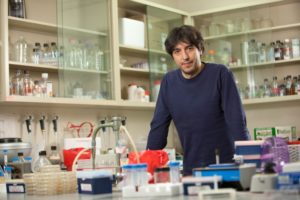
Seems I have been doing it wrong. Not eating for 14-16 hours. Here’s the right way to do it!
https://news.usc.edu/135551/fasting-aging-dieting-and-when-you-should-eat-valter-longo/
(27 June 2024 Subsequent research reveals endocrine imbalances occur when you consistently go for longer than 12 hours without food.)
Epigenetic Memories Passed 14 Generations
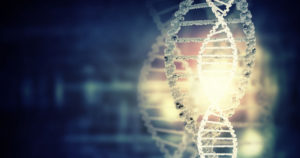
This article has GREAT content but a severe drawback is that an extremely high level of understanding of genetics and biology is required to fully comprehend it without extensive use of the dictionary. In the first two sections I counted 17 words just for which off the top of my head I could not give an accurate definition. I commented on the article that if you are writing to communicate to the general public and not just biologists you would be well advised to either define the technical words used or keep the target audience in mind and phrase accordingly.
So here’s the synopsis.
The genes you inherit from your parents account for only 10-16% (depending on whom you quote) of your health outcomes. Whether diet, lifestyle choices, environmental factors and toxins “turn on” or cause those genes to be expressed, is 84-90% of the deal.
…the Centers for Disease Control (CDC) states that genetics account for only 10% of disease, with the remaining 90% owing to environmental variables. An article published in the Public Library of Science One (PLoS One) entitled “Genetic factors are not the major causes of chronic diseases” echoes these claims, citing that chronic disease is only 16.4% genetic, and 84.6% environmental. These concepts make sense in light of research on the exposome. (Definition: The exposome encompasses the totality of human environmental (i.e. non-genetic) exposures from conception onwards, complementing the genome, first proposed in 2005 by a cancer epidemiologist. The cumulative measure of all the environmental insults an individual incurs during their life course that determines susceptibility to disease.)
For instance some heart drugs have been found to cause gene changes that lead to lupus.
Genes Might Load the Gun But Environment Pulls the Trigger
Pharmaceuticals, however, are not the only agents that can induce epigenetic disturbances. Whether you were born via vaginal birth or Cesarean section, breastfed or bottle-fed, raised with a pet in the house, or infected with certain childhood illnesses all influence your epigenetic expression. Whether you are sedentary, pray, smoke, mediate, do yoga, have an extensive network of social support or are alienated from your community—all of your lifestyle choices play into your risk for disease operating through mechanisms of epigenetics.
In delineating the totality of exposures to which an individual is subjected over their lifetime, the exposome can be subdivided into three overlapping and intertwined domains. One segment of the exposome called the internal environment is comprised of processes innate to the body which impinge on the cellular environment. This encompasses hormones and other cellular messengers, oxidative stress, inflammation, lipid peroxidation, bodily morphology, the gut microbiota, aging and biochemical stress.
Another portion of the exposome, the specific external environment, consists of exposures including pathogens, radiation, chemical contaminants and pollutants, and medical interventions, as well as dietary, lifestyle, and occupational elements.
At an even broader sociocultural and ecological level is the segment of the exposome called the general external environment, which may circumscribe factors such as psychological stress, socioeconomic status, geopolitical variables, educational attainment, urban or rural residence, and climate.
Transgenerational Inheritance of Epigenetic Change: Endocrine Disruptors Trigger Infertility in Future Generations
Scientists formerly speculated that epigenetic changes disappear with each new generation during the formation of sperm and ovum, and after fertilization. This theory was first challenged by research published in the journal Science which demonstrated that transient exposure of pregnant rats to the insecticide methoxychlor, an estrogenic compound, or the fungicide vinclozolin, an antiandrogenic compound, resulted in increased incidence of male infertility and decreased sperm production and viability in 90% of the males of four subsequent generations that were tracked.
Most notably, these reproductive effects were associated with derangements in DNA methylation patterns in the germ (sperm and eggs) line, suggesting that epigenetic changes are passed on to future generations. The authors concluded, “The ability of an environmental factor (for example, endocrine disruptor) to reprogram the germ line and to promote a transgenerational disease state has significant implications for evolutionary biology and disease etiology”. This may suggest that the endocrine-disrupting, fragrance-laden personal care products and commercial cleaning supplies to which we are all exposed may trigger fertility problems in multiple future generations.
Reactions to Toxins and Environmental Stressors Passed to Next Generation
…The study suggests that certain characteristics of the parental sensory environment experienced before conception can remodel the sensory nervous system and neuroanatomy in subsequently conceived generations…
…exposures to certain stressors such as starvation during the gestational period are associated with poor health outcomes for offspring. Women who undergo famine before conception of her offspring have been demonstrated to give birth to children with lower self-reported mental health and quality of life, for example…
New study links common herbicides and antibiotic resistance

A new study finds that bacteria develop antibiotic resistance up to 100,000 times faster when exposed to the world’s most widely used herbicides, Roundup (glyphosate) and Kamba (dicamba) and antibiotics compared to without the herbicide.
A new study finds that bacteria develop antibiotic resistance up to 100,000 times faster when exposed to the world’s most widely used herbicides, Roundup (glyphosate) and Kamba (dicamba) and antibiotics compared to without the herbicide.
This study adds to a growing body of evidence that herbicides used on a mass industrial scale, but not intended to be antibiotics, can have profound effects on bacteria, with potentially negative implications for medicine’s ability to treat infectious diseases caused by bacteria, says University of Canterbury scientist Professor Jack Heinemann, one of the study’s authors.
“The combination of chemicals to which bacteria are exposed in the modern environment should be addressed alongside antibiotic use if we are to preserve antibiotics in the long-term,” he says.
An important finding of the new study was that even in cases where the herbicides increase the toxicity of antibiotics they also significantly increased the rate of antibiotic resistance, which the study’s authors say could be contributing to the greater use of antibiotics in both agriculture and medicine.
Previously these researchers found that exposure to the herbicide products Roundup, Kamba and 2,4-D or the active ingredients alone most often increased resistance, but sometimes increased susceptibility of potential human pathogens such as Salmonella enterica and Escherichia coli depending on the antibiotic.
“We are inclined to think that when a drug or other chemical makes antibiotics more potent, that should be a good thing. But it also makes the antibiotic more effective at promoting resistance when the antibiotic is at lower concentrations, as we more often find in the environment” Professor Heinemann says.
“Such combinations can be like trying to put out the raging fire of antibiotic resistance with gasoline.”
https://phys.org/news/2018-10-links-common-herbicides-antibiotic-resistance.html
How Fracking Works

Might leave out some technical details but this is how your electoral process and water get corrupted in one shot.
And for some humour on the subject…

Every Bite You Take
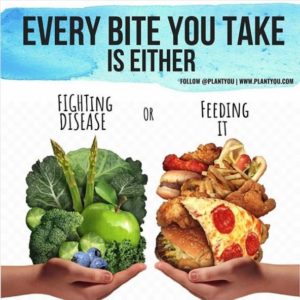
Make some of your bites truly healthelicious.com.au!
Vitamin D And Cancer
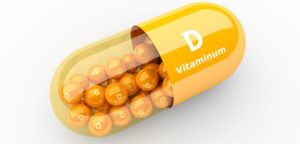
You may have seen a post on the now deceased doctors who found vaccines contain the enzyme nagalase that enables cancer to grow. Here is some data on that.
Nagalase: Friend and Foe?
What is Nagalase?
Nagalase is a protein made by all cancer cells and viruses (HIV, hepatitis B, hepatitis C, influenza, herpes, Epstein-Barr virus, and others). Its formal, official chemical name is alpha-N-acetylgalactosaminidase, but this is such a tongue-twisting mouthful of a moniker that we usually just call it “Nagalase.” (Sometimes, when I want to impress friends with my brilliance, I’ll say the entire word real fast: “alpha-N-acetylgalactosaminidase.” I have found that it’s important to practice beforehand if one doesn’t want to embarrass oneself.)
Why is Nagalase important?
Nagalase causes immunodeficiency. Nagalase blocks production of GcMAF, thus preventing the immune system from doing its job. Without an active immune system, cancer and viral infections can grow unchecked.
As an extremely sensitive marker for all cancers, Nagalase provides a powerful system for early detection.
Serial Nagalase testing provides a reliable and accurate method for tracking the results of any therapeutic regimen for cancer, AIDS, or other chronic viral infection.
Nagalase proves that cancer cells break all the rules
Normal healthy cells cooperate with one another in a concerted effort to further the good of all. Cancer cells refuse to play ball. Their disdainful attitude toward the rest of our cellular community is appalling. For example, these cellular scofflaws ignore clear messages to stop growing and spreading and encroaching on their neighbor’s space. How would you like it if your neighbor moved his fence over into your backyard?
Of all the rules cancer cells break, none is more alarming than the production of Nagalase, the evil enzyme that completely hog-ties the immune system army’s ability to stop cancer cells.
Virus particles also make Nagalase. Their goal is the same as that of the cancer cells: survival by incapacitating their number one enemy: the immune system.
Nagalase precision
Like a stealth bomber, the Nagalase enzyme synthesized in and released from a cancer cell or a virus particle pinpoints the GcMAF production facilities on the surface of your T and B lymphocytes and then wipes them out with an incredibly precise bomb. How precise? Let me put it this way: Nagalase locates and attacks one specific two-electron bond located at, and only at, the 420th amino acid position on a huge protein molecule (DBP), one of tens of thousands of proteins, each containing millions of electrons. This is like selectively taking out a park bench in a major city from six thousand miles away. More astonishing, if that is possible, Nagalase never misses its target. There is no collateral damage.
As you already know, GcMAF is a cell-signaling glycoprotein that talks to macrophages, enabling them to rapidly find, attack, and kill viruses and cancer cells. By activating macrophages, GcMAF triggers a cascade that activates the entire immune system. Blockage of GcMAF production by Nagalase brings all this wonderful anti-cancer and anti-viral immune activity to a screeching halt, allowing cancer and infections to spread.
What does Nagalase actually do? How does it destroy immune functioning and deactivate macrophages?
Once synthesized and released into nearby tissue or into the bloodstream, Nagalase, like that drill sergeant at boot camp, shouts harsh commands at the vitamin D binding protein (DBP) that is about to be turned into GcMAF. Nagalase demands that DBP not, under any circumstances, attach itself to a specific sugar molecule (galactosamine). If DBP has already grabbed (i.e., connected to, using a two-electron, “covalent” bond) a galactosamine sugar molecule, it is commanded to immediately let go. “Leave galactosamine alone, or you’ll be in big trouble!!!” is the Nagalase sergeant’s command. We’ll probably never know whether or not, on some deeper level, DBP knows that Nagalase’s motives are dastardly—but it doesn’t really matter: DBP will definitely always obey. Like the army private, the DBP literally has no choice. Because of the way hierarchies work in cellular biology, proteins must do the bidding of their enzymes. The enzymes, like Nagalase, are the drill sergeant and the proteins, like DBP, are the privates. That’s just the way it is. Obeying the drill sergeant’s command means DBP can’t do its assigned task, that of becoming GcMAF. It is rendered useless. For DBP, on a molecular level, life no longer has meaning.
Unfortunately for cancer and viral patients, DBP had been on its way to becoming GcMAF until the Nagalase drill sergeant so rudely interrupted. Now GcMAF—the one protein our bodies need in order to activate our immune systems—can’t be made. Immune activity screeches to a halt. The defense system protecting us from cancers and viruses has been snuffed out.
Nagalase, using this astonishingly simple yet cunningly subversive technique, emasculates the GcMAF precursor protein (DBP) by knocking off its three sugar molecules. One quick whack by Nagalase and the DBP protein that would have become a GcMAF molecule now limps off into the sunset, permanently disfigured and disabled. With one simple, swift maneuver, Nagalase has brought the entire immune system to its knees.
Here’s how Dr. Yamamoto put it (for clarity, I’ve replaced some of the technical words):
“Serum vitamin D3-binding protein (DBP) is the precursor for the principal macrophage activating factor (GcMAF). The precursor activity of serum DBP was reduced… These patient sera contained alpha-N-acetylgalactosaminidase (Nagalase) that deglycosylates (removes the sugars from) DBP. Deglycosylated DBP cannot be converted to GcMAF, thus it loses the GcMAF precursor activity, leading to immunosuppression.” (Microbes Infect. 2005 Apr;7(4):674-81. Epub 2005 Mar 22. Pathogenic significance of alpha-N-acetylgalactosaminidase activity found in the hemagglutinin of influenza virus. Yamamoto N, Urade M.)
Nagalase testing: former mass murderer now works for the good guys
It’s easy to be a little schizy about Nagalase. On the one hand, this nasty protein’s behavior toward us has been reprehensible and disastrous. Working in cahoots with cancer and HIV—not shy about getting into bed with our mortal enemies—Nagalase can rightfully claim direct responsibility for billions of human deaths. And it would just as soon add you to the list, so we don’t have to be shy about placing Nagalase in the “genocidal murderer” column.
With the advent of Nagalase testing, however, this bad actor now will be harnessed to a useful purpose. By providing us with precise and reliable advance information about enemy operations, Nagalase blood level testing becomes a “Deep Throat” double agent for cancer. He helps us by giving us an early warning sign.
Early detection (using AMAS or Nagalase) saves lives
You don’t want a cancer to have gotten out of control by the time you find and start treating it. When cancers are still young and small, gentle natural therapies are the most effective. Alternative treatments work best on early small cancers by enhancing immune functioning and removing the source of the inflammation that is causing the cancer in the first place. Cancers that have become large enough to see on imaging pose a much more significant threat, and the big guns now become necessary.
The current method for diagnosing most cancers requires us to wait until a mass shows up on imaging (e.g., a mammogram, chest X-ray, or colonoscopy). This approach wastes valuable time and causes needless deaths. But long before imaging can find it, a positive Nagalase (or AMAS test) can tell us that early stage cancer exists somewhere in the body. By enabling earlier and therefore less invasive treatment options, this information provides a huge head-start.
Normally present at only trace levels, Nagalase shows up in the blood when a cancer or virus appears
The malignant and viral entities that make Nagalase are not normally present, so its appearance is a big deal from a diagnostic perspective. When Nagalase shows up, even in very small amounts, we have the earliest glimpse of a new cancer or viral infection. The old adage, “Where there’s smoke, there’s fire” applies here. A positive Nagalase test notifies us that a cancer (or a nasty virus) lurks within.
Nagalase appears in the blood stream when a nascent cancer is just a minute cluster of abnormal cells, long before conventional diagnostic methods can detect it. Through blood testing, we can find this red flag, even when present at exceedingly low levels. Providing us with this early warning sign might not quite qualify Nagalase for the “Good Samaritan” award, but I could go with “extremely useful.” Like a rehabilitated criminal on parole, the potential for harm is still there. For now, however, he’s staying out of trouble and doing community service. Turn your back and he’s a mass murderer again.
Using Nagalase testing to track cancer treatment
Rising Nagalase levels indicate a cancer or virus is growing and spreading. Conversely, Nagalase levels will decrease if the cancer or infection is being effectively destroyed.
Any treatment that lowers cancer cell (or viral numbers) will lower Nagalase levels. Nagalase will, for example, always drop after surgery (whether or not the entire tumor was removed). Chemotherapy and radiation also reduce Nagalase levels. So does GcMAF. If, after these treatments, the depressed level begins to rise again, this is the warning sign that the cancer was not completely removed, and/or that metastatic disease is hiding out somewhere. With viral infections, increasing Nagalase levels indicate return of the infection.
Consecutive rising Nagalase levels are therefore a red flag, warning us it may be time to entertain new treatment options. Conversely, if levels are going down, stay the course: the cancer or virus is going away.
Flat-earth medicine
Many medical professionals don’t feel comfortable with “nonspecific” tests like Nagalase. It drives them nuts to discover that a cancer is lurking somewhere inside without knowing exactly where it is located. “How,” they ask, “do you expect me to treat a cancer I can’t see? Why, I’m not going to tilt at windmills!” This may be a signal that you need to find a different doctor, perhaps one who works in an alternative cancer clinic. Here you will find highly-trained professionals who understand the concept that cancer is a molecular biological change long before it presents visually (by this I mean becomes viewable on imaging).
When GcMAF becomes available, the answer will be easier: a six month course of weekly 100 ng GcMAF intramuscular injections with monthly Nagalase level tests to follow the Nagalase level as it goes back down to baseline. The cancer can be declared cured, even though it never reached life-threatening proportions. (We have a long way to go before this kind of medical behavior will be commonplace and acceptable. The sooner the better, however.)
Nagalase role “under-appreciated”
Nagalase, arguably our most immunosuppressive protein molecule, poses an enormous threat in terms of cancer perpetuation and viruses’ ability to continually defeat us. Yet cancer researchers have not shown any interest in it. (Maybe I’m being a little too generous here; perhaps “clueless” would be more a more accurate depiction.) Why don’t they get it that blasting cancer cells into oblivion with chemo and radiation is usually not sufficient to stop advanced disease and does nothing to address the cause: immunosuppression. Even if we ignore for the moment the excessive collateral damage caused by chemo drugs and radiation, the patient also needs—requires—a healthy immune system to finish the job. If we don’t revive immune function by disabling Nagalase, the cancers and viruses will just keep roaring back. Restoring immunocompetence by negating the stultifying effect of Nagalase should therefore become a primary research goal.
https://www.prod5.com/everything-you-need-to-know-about-vitamin-d-and-cancer-prevention.html
